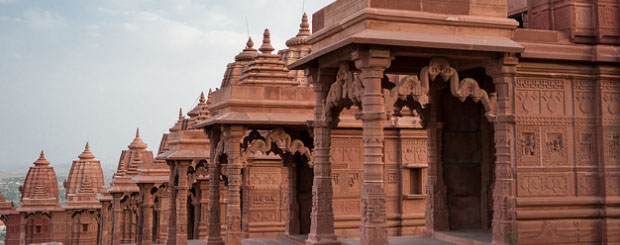The beauty and sanctity of Ajmer

Ajmer, a quiet city amidst sprawling sands in Rajasthan, is the blessed land of the Sufi peer (saint) Khwaja Moinuddin Chisthi. It is a place where people of all religions – Muslims and Hindus mainly come to pray and ask for blessings.
Ajmer is renowned in history as the seat of power of Prithviraj Chauhan. The city was lost to Mohammed Ghauri and with the coming and going of many dynasties; the city gained its unique amalgamation of Hinduism and Islam which is evident in Sufism.
In 1190 AD, Khwaja Moinuddin Chishti is believed to have reached Ajmer and began preaching there. The Dargah Ajmer Sharif is believed to have begun construction by Akbar and over the years, completed by Humayun. It has intricate metal carvings, rich colored heaped rose petal designs. You will be lucky to hear melodious Sufi chants and participate in Qawwali gatherings. The Dargah has a massive gateway donated by the Nizam of Hyderabad, a mosque in white built by Shah Jehan. There are the much grandeur that await your sight.
The Indo-Islamic architectural marvel completed in 2 ½ days (Adhai-din), Adhai-din-ka-Jhonpra is another spectacular mosque. It is graced by intricate Islamic calligraphy. The Taragarh Fort, built by Ajaipal Chauhan is on a hilltop just 3 kms ride from here.
The Akbar’s Palace and Museum presents Mughal and Rajasthani antiques. Soni Ji Ki Nasiyan – the double-storey red-dyed Digambar Jain temple is another site to behold with its gold plated wooden figures from Jain mythology, glass mosaic, precious stones, gold and silver work.
The best time to visit Ajmer is of course during ID, Muharram, the Urs (death anniversary of the Khwaja), Ramadan if you don’t mind the crowds and wish to feel the pulse of vibrant India. But for amore sane and calm visit, you can visit during the Pushkar Mela in November which takes place a couple of miles from Ajmer.








